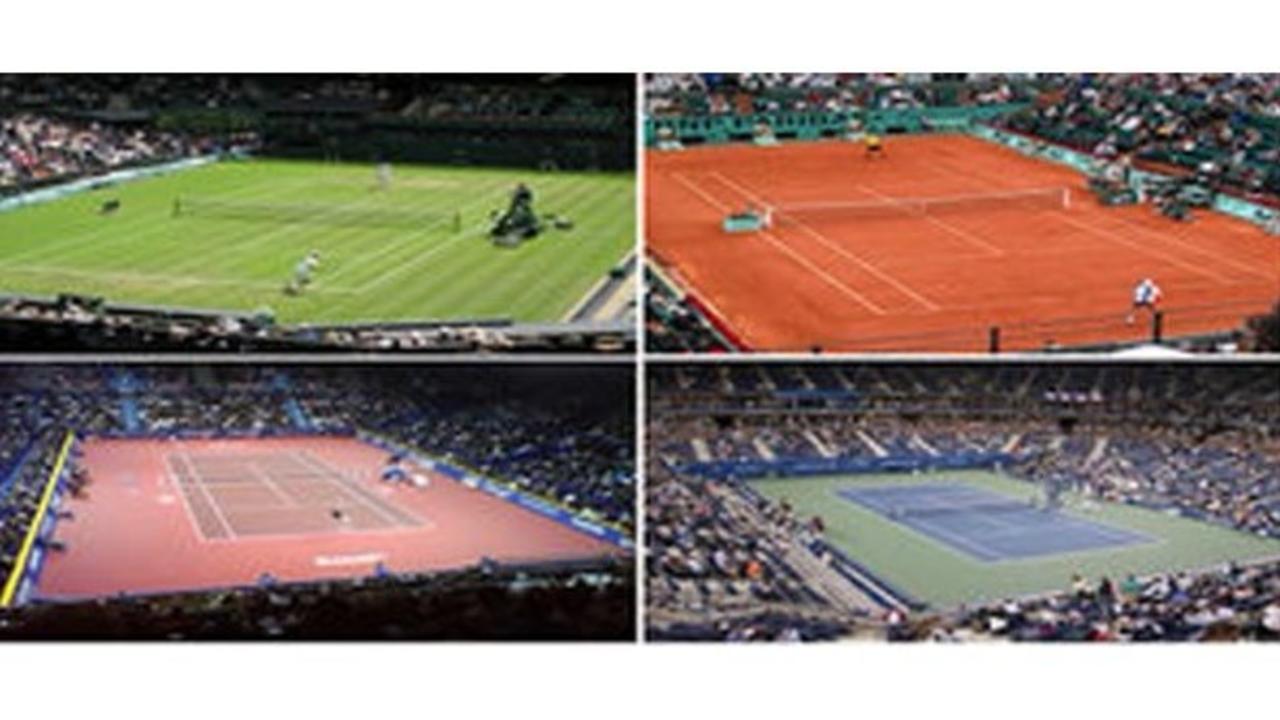How Should Tennis Training Differ From Surface to Surface?
Apr 04, 2017
Just as court surfaces differ throughout the world, there are different courts that you might encounter as a social player. Altering your tennis training according to the surface you’re currently or preparing to play on, is a smart way to train for tennis. This will get your body better prepared and lessen the chance of tennis injury. So how should training for tennis differ from surface to surface? To understand this better let's take a look at some key characteristics of varying court surfaces. Synthetic grass
- Low ball bounce, fast court, poor traction underfoot.
- Average point = 3–5 seconds.
Clay
- High ball bounce, slow court, poor traction underfoot.
- Average point = 6–10 seconds.
Hardcourt
- Medium ball bounce, moderate-fast court, good traction underfoot.
- Average point = 4–6 seconds.
Grass
- Low ball bounce, fast court, Moderate traction underfoot.
- Average point = 3–5 seconds.
Tennis Information
Here are our tips on preparing for each surface. Grass/Synthetic grass
- Due to the low ball bounce it is important to do lower body exercises, getting down into deep range as your gluteals. will get a good workout on grass (low squats, low lunges, and wall holds work well).
- Considering the short point duration and speed of the court it is important to work on your footwork, reaction time and getting prepared early for shots. Doing 15 minutes of foot speed, reaction, and agility drills before practice will help.
- If you are a serve-volleyer, it is also common for players to get tight forearms. So a good wrist and forearm strengthening program will also be very beneficial. (Wrist flexion and extension exercises)
Hardcourt
- The impact involved with playing on the hard court means that the body cops a lot of stress (musculoskeletal). It is therefore important to follow a good core and total body strength program if you are planning to play a lot on this surface.
- Considering the speed and consistency of the court (bounce and pace), it is particularly important to get your footwork right. Follow a tennis footwork program that involves shot preparation (small controlled steps) and acceleration/deceleration principles. This will help you get more control over your lower body positioning.
- We also recommend any additional tennis fitness training should be performed on a soft surface – such as a rubber floor or grass – to avoid any additional loading on the body.
- It is common to see players roll their ankles playing on hard court surfaces; this is due to the grip or traction from the court, combined with the rubber soles on tennis shoes. To help prevent, we recommend that players follow an ankle stability program, consisting of 3–5 exercises to challenge the muscles around the ankle joint.
Clay court
- Clay is low impact compared to the other surfaces and due to the relatively higher bounce (topspin) players generally, have more time to prepare for shots.
- Preparing to play on clay should involve a higher workload of agility sessions (3–4 sets of 6–8 exercises, 20–30 seconds in duration, with 20–30 seconds recovery). This will help prepare you for the longer points.
- Due to the sliding nature of clay courts, it is important to strengthen up your adductor muscles and gluteals. Sliding is a skill; practice it as much as you can. The on-court tennis agility sessions will help.
- It is also important to add in some additional shoulder and core exercises into your program. Considering that the ball bounces higher, you need to ensure you have good core and shoulder stability.
These are some tips that will provide you with some important base information for a tennis training program for every court. Speak to trained tennis fitness trainers to get a tennis training program that is specific to you and the surface you plan to play on.
Good luck, stay in touch!
If you want to get more out of yourself and improve your tennis fitness check out our online programs here – http://www.memberstennisfitness.com


